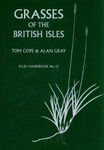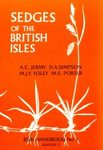Field / Identification Guide Identification Key
By: Tim CG Rich(Author), Andy McVeigh(Author), Martin Godfrey(Editor)
174 pages, colour photos, colour illustrations, b/w line drawings, distribution maps
Over 25 years in the making, this BSBI handbook gives a complete description all British gentians, including distribution maps and keys.
![Gentians of Britain and Ireland Gentians of Britain and Ireland]()
Click to have a closer look
About this book
Customer reviews
Related titles
About this book
There can be few more striking, instantly recognisable plants than the beautiful spring gentian or the perennial centaury. However, other British and Irish members of the gentian family may be more difficult to identify for a variety of reasons, including recent origins of closely related taxa, hybridisation, local genetic differentiation and environmental plasticity. Some species are very rare and protected, others are common and widespread.
The aim of this new BSBI Handbook is to provide guidance on gentian identification and summarise what is currently known about them. The initial idea came out of work on conservation of the endemic early gentian Gentianella amarella subsp. anglica in the 1990s and the research has taken over 25 years to complete.
The handbook includes an introduction, identification guidance and keys, accounts of the 18 species and 4 hybrids in Blackstonia, Cicendia, Exaculum, Centarium, Gentianella and Gentiana, references, glossary and indices with distribution maps, line drawings and colour photographs.
Customer Reviews
Field / Identification Guide Identification Key
By: Tim CG Rich(Author), Andy McVeigh(Author), Martin Godfrey(Editor)
174 pages, colour photos, colour illustrations, b/w line drawings, distribution maps
Over 25 years in the making, this BSBI handbook gives a complete description all British gentians, including distribution maps and keys.
"Most of BSBI’s excellent handbooks on the British and Irish flora are about plants that are similar to one another, and in some cases hard to identify. At first sight, gentians seem different. As a family, gentians are pretty, often of conservation interest (they indicate good quality habitats) and not a critical group at all. Yet the two largest genera of the Gentianaceae, Gentianella (the felworts) and Centaurium (the centauries), have concentrated and confused botanical minds for decades, and indeed this handbook introduces some new changes which, one hopes, will be the last word on the matter. [...] BSBI handbooks have to focus on identification rather than ecology and conservation, and within a fairly rigid format, but all the same, this handbook manages to cover a lot of ground, including distribution (with updated dot-maps), variation and hybrids, discovery dates and what those Latin names mean, reproductive biology, and population trends, which in all too many cases are firmly downhill. The colour photographs of the plants are generally good. The habitat shots are too small and, in some cases, rather dark. [...]"
– Peter Marren, British Wildlife 31(6), August 2020







































